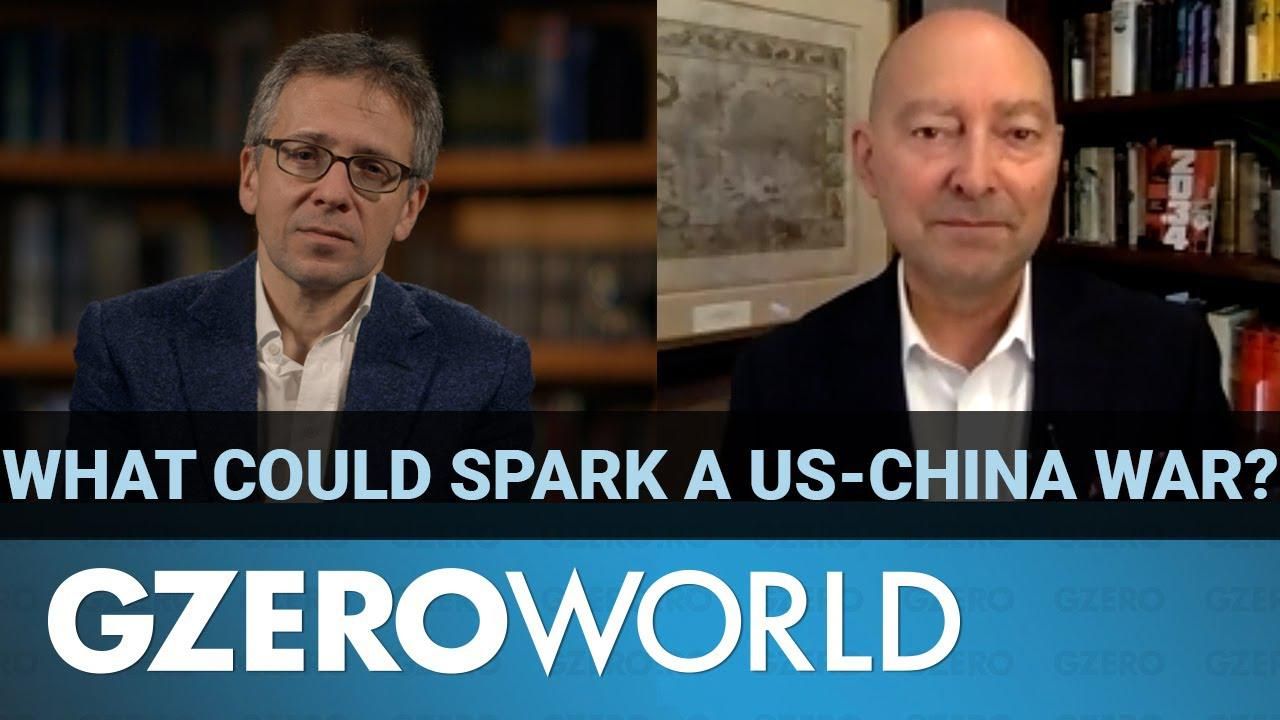May 17, 2021
Ask national security experts how they view China today and they'll likely the use a term like "adversary" or "economic competitor." But what about "enemy?" How close is the world to all-out-war breaking out between United States and China? According to US Admiral James Stavridis (Ret.), who served as Supreme Allied Commander to NATO, those odds are higher than many would like to admit. In fact, Stavridis says, the US risks losing its military dominance in the coming years to China. And if push comes to shove in a military conflict, it's not entirely clear who would prevail. Admiral Stavridis speaks with Ian Bremmer on GZERO World and makes the case for why the fictional depiction in his bestselling new military thriller 2034 of a US-China war could easily become reality.
From Your Site Articles
- Why John Kerry's trip to China matters for all of us - GZERO Media ›
- The limits of a China-Russia partnership - GZERO Media ›
- US election seen from China: Worries about a "hot war" - GZERO ... ›
- Would China really invade Taiwan? - GZERO Media ›
- Democrats and Republicans unite! At least against China. - GZERO Media ›
- Democrats and Republicans unite! At least against China. - GZERO Media ›
- Biden's vaccine diplomacy and US global leadership; US-China bill gets bipartisan support - GZERO Media ›
More For You
Global conflict was at a record high in 2025, will 2026 be more peaceful? Ian Bremmer talks with CNN’s Clarissa Ward and Comfort Ero of the International Crisis Group on the GZERO World Podcast.
Most Popular
Think you know what's going on around the world? Here's your chance to prove it.
Indian Prime Minister Narendra Modi isn’t necessarily known as the greatest friend of Muslim people, yet his own government is now seeking to build bridges with Afghanistan’s Islamist leaders, the Taliban.
French President Emmanuel Macron, German Chancellor Friedrich Merz, Ukrainian President Volodymyr Zelenskiy, U.S. Special Envoy Steve Witkoff and businessman Jared Kushner, along with NATO Secretary-General Mark Rutte and otherEuropean leaders, pose for a group photo at the Chancellery in Berlin, Germany, December 15, 2025.
Kay Nietfeld/Pool via REUTERS
The European Union just pulled off something that, a year ago, seemed politically impossible: it froze $247 billion in Russian central bank assets indefinitely, stripping the Kremlin of one of its most reliable pressure points.
© 2025 GZERO Media. All Rights Reserved | A Eurasia Group media company.
